Choose Gnosis or St Peter's Christianity from the Sistine Chapel?
I
wrote in my book at my discovery of a peculiar ceiling fresco in the
Vatican museum and how I was unable to find it again despite visiting
the Vatican on further occasions. I had assumed that I must have been lost at the time. It was a fresco of a woman sitting on
a throne held aloft in the sky by cherubs. In one hand she holds a
staff and in the other she holds ouroborous. The latter being a snake
swallowing its own tail and forming a circle. It symbolises eternity
and rebirth and is a symbol used in many esoteric settings. Above the
woman's head is a pyramid containing the 'all seeing eye' also known as
the eye of providence. This is the same symbol used on the US one
dollar bill and throughout freemasonry.
On a recent return to
the Vatican (both pleasure and business) I realised why I had failed to
find it again. Within the world famous Sistine Chapel there are two exit
doors. The right leads to St Peter's Basilica and the left leads back
into the Vatican museums. On each visit previously I had taken the
right hand door and not the left or sinestra (Italian). Sinestra means
left but also sinister and is where the English word originates. So
what was behind this sinister door? Gnosis. Almost immediately the
ceiling frescos show a woman on a throne. It is the same woman as
described earlier and in my book. In the first fresco she is wearing a
large sun medallion or broach and in the second it is as described
earlier with the pyramid, all seeing eye, and ouroborous. The alcoves
feature various depictions of scenes and writing underneath referring
to the pursuits of astronomy, philosophy, poetry, painting, algebra and
so on. This was all clearly about human knowledge or Gnosis.
Here are some of the images.
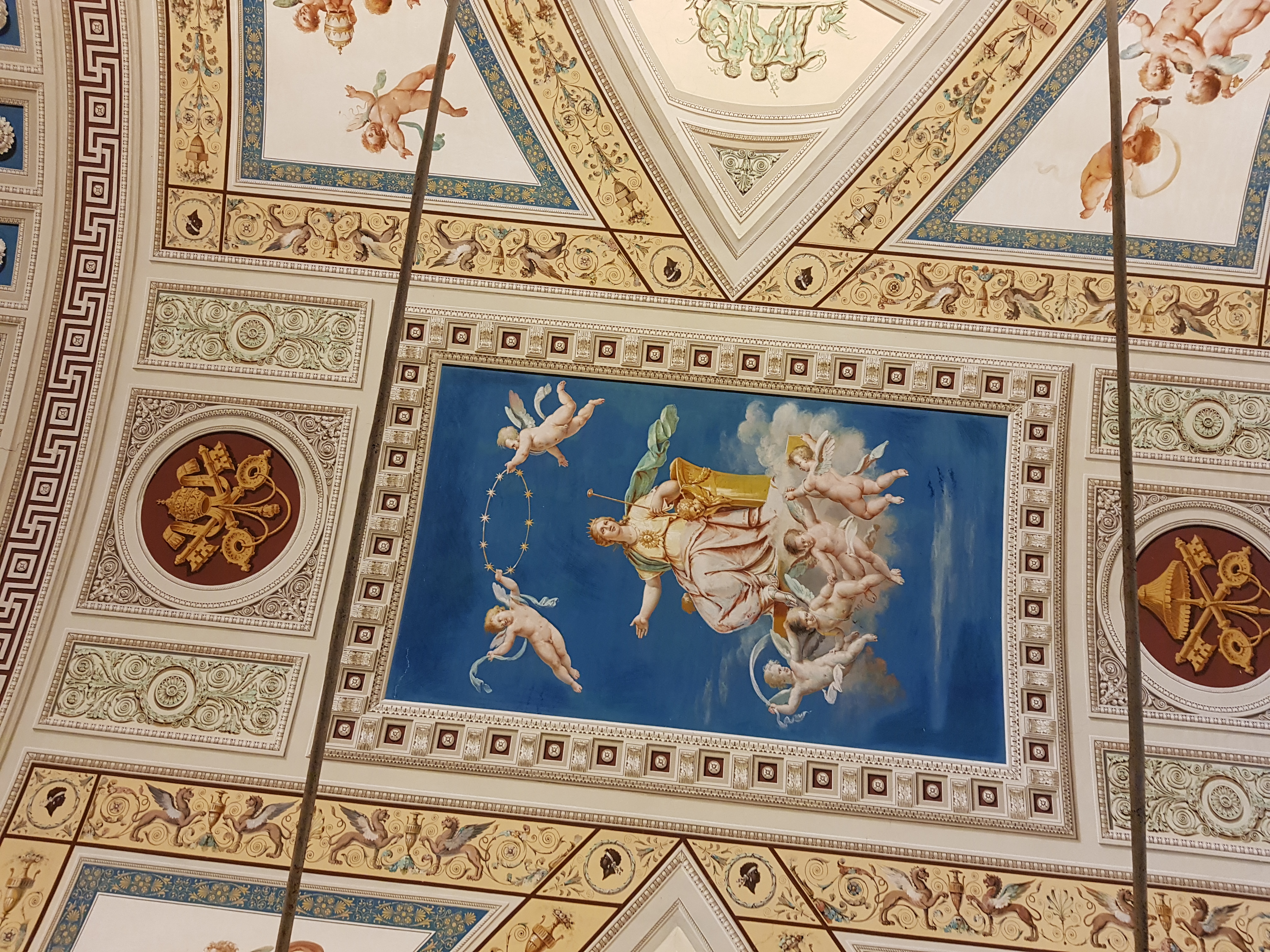
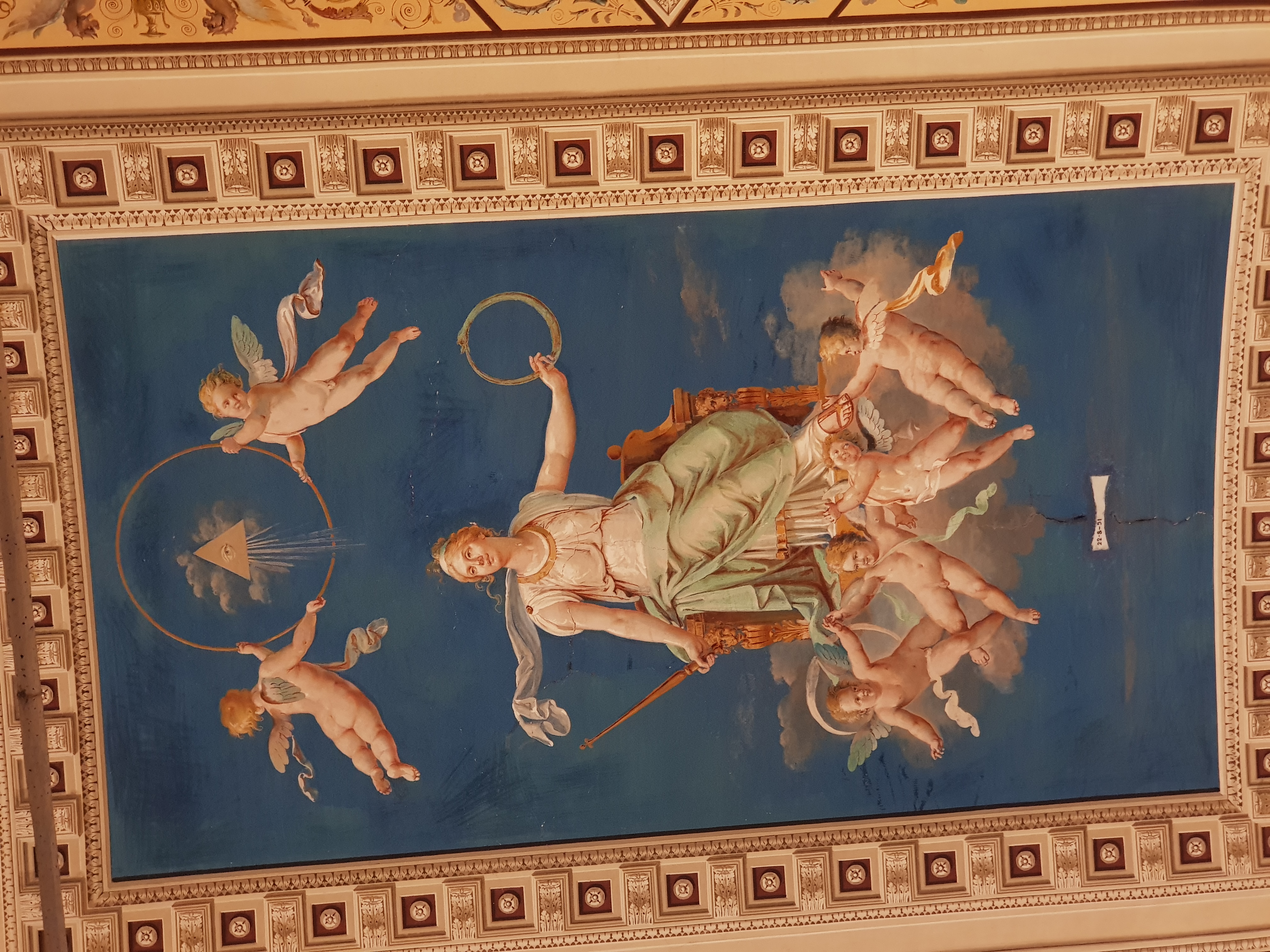
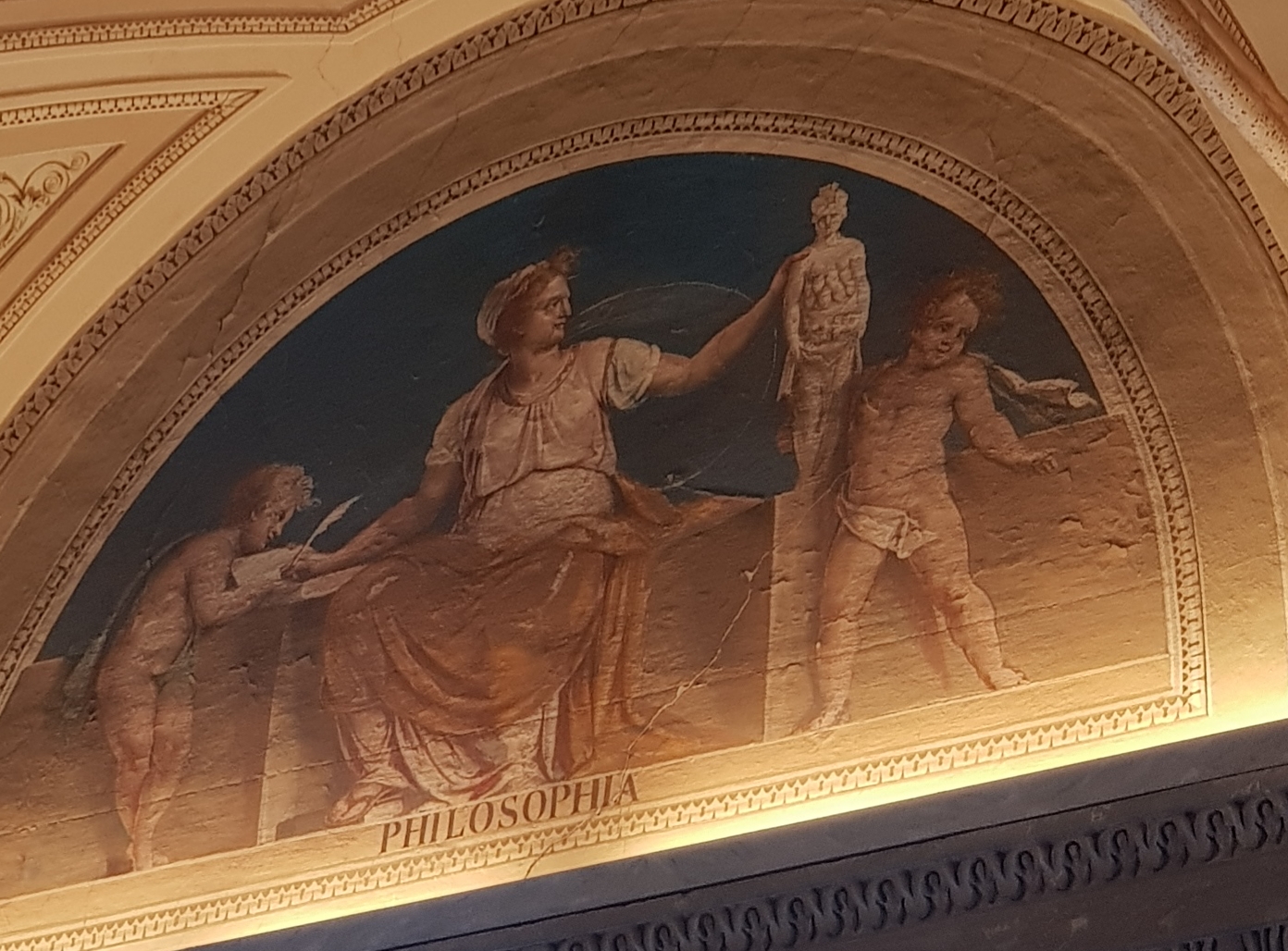
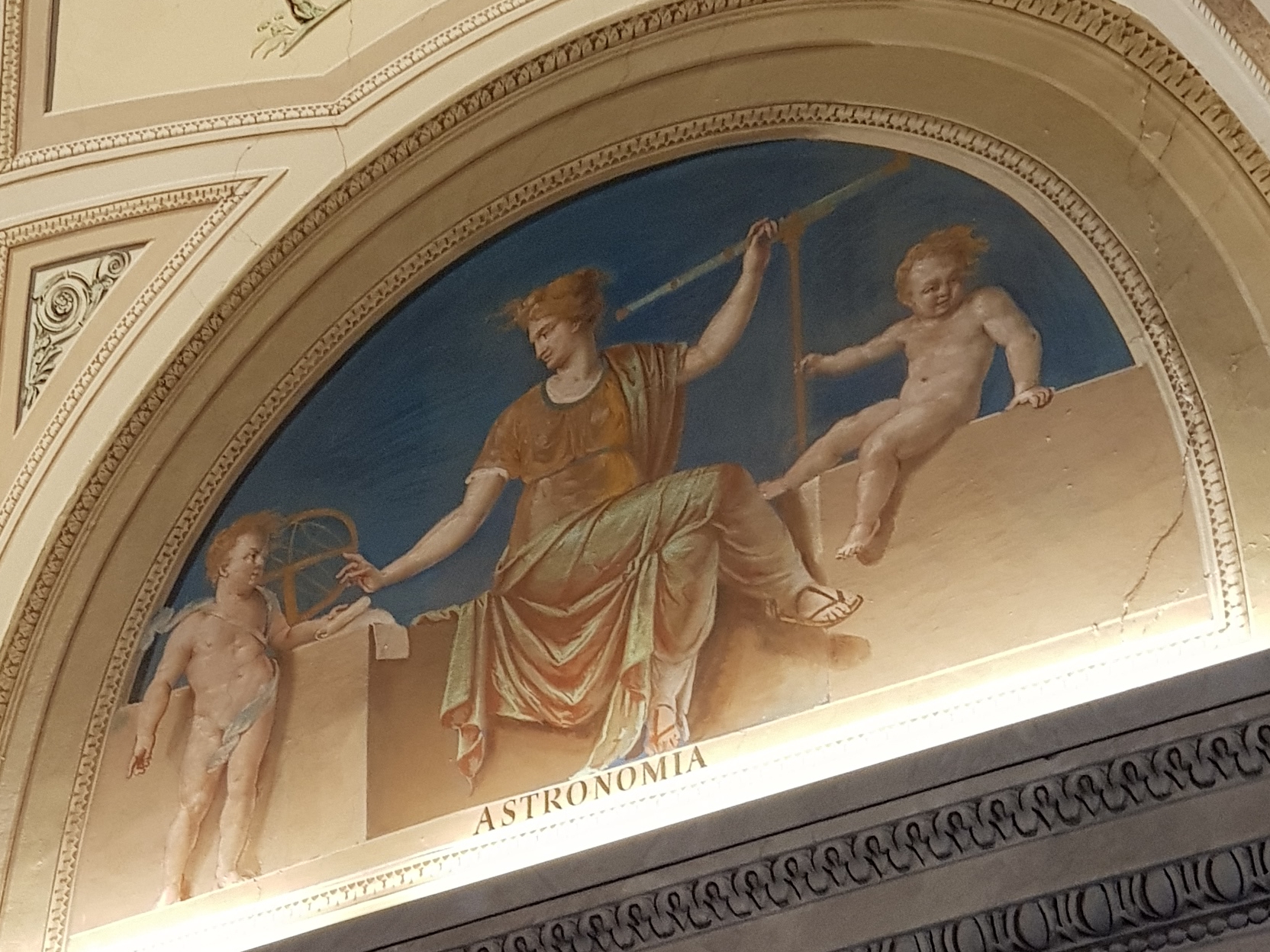
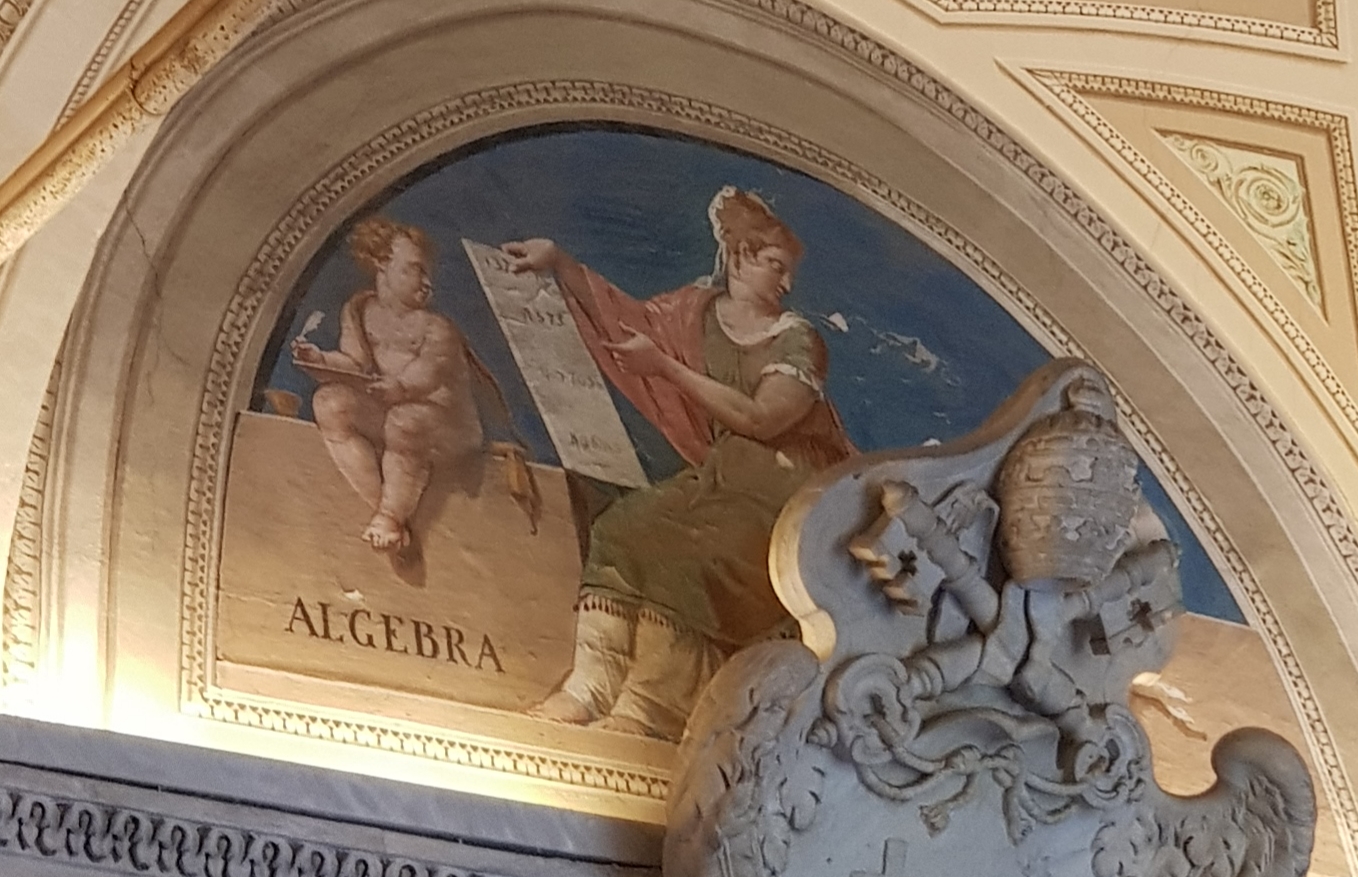
I
can only conclude that this is another contrast or contradiction. Take
the left or sinister door to Gnosis? Take the right door to St Peter's
Basilica and Christianity?
So here are my reflections and
caveats. I do not know who the woman really is. I have some ideas only.
I do not know who painted this nor when. I do not know if these two
exit paths were conceived deliberately to create a form of knowledge
versus faith contrast or choice. I'd be pleased to discuss theories
however.
Go back



